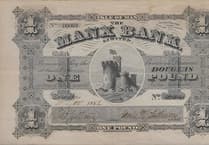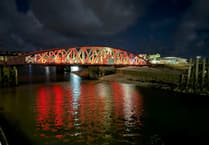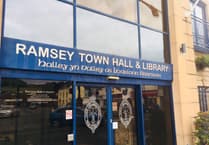Tales of the island’s smuggling history, with canny Manxmen outsmarting the customs agents, have a certain romance and charm.
Running alongside this well-known history was something altogether more troubling.
Over the course of the 18th century the Isle of Man’s politicians, merchants and seafarers became profoundly involved in the slave trade.
It began unassumingly enough. Beads, fabrics and precious items known as ’Guinea goods’ started arriving from Holland around 1718. They were collected by Liverpool ships bound for the West African coast where they were exchanged for slaves, who were shipped across the Atlantic and sold in the Caribbean.
The ships returned to Liverpool loaded with rum, tobacco and cotton from the plantations of the New World.
Euphemistic names like ’the triangular trade’ or ’Guinea voyages’ glide over the brutal nature and shocking scale of the enterprise. Between 1640 and 1807, when the British slave trade was abolished, it’s estimated that over three million Africans were transported to colonies in the Caribbean by British slave traders.
By the 1750s more than half of the Liverpool slaving ships were collecting Guinea goods from the island.
Although the business dried up after the Revestment Act of 1765, they acted as a gateway into the slave trade for some of the island’s most powerful merchants.
Advocate, politician and merchant John Taubman, for one, switched from Guinea goods to direct investment in slaving voyages. He became one of the central political forces in the island during the second half of the 18th century.
Taubman (pictured below, right) and his descendants were at the centre of a tightly-knit clique that dominated the Manx political establishment for generations. Everyone was connected, whether through business or marriage.
In the 1790s, while he was Speaker of the House of Keys, Taubman was directly related to 12 of the other members of the house, while four more were connected with him through his business interests.
To these merchants, who had made their fortunes in smuggling, it seems that slavery was just another profitable business.
Recent research has begun to lift the lid on some of these ventures. We know that Taubman invested in at least two slaving voyages, and he wasn’t the only one: between 1744 and 1786, at least nine other Manx merchants were financial partners in slave voyages, with interests in 27 different ships.
In 1772 trader and smuggler George Moore administered to - and profited from - the sale of a coffee plantation in Nicaragua.
Among the ’assets’ that were sold were dozens of enslaved men, women and children.
A list of these individuals is among the documents in the Manx National Heritage archives.
Connected to this insular clique was a certain Captain Hugh Crow, who became the most famous - or infamous - Manx slave captain of his era.
In his seven voyages as captain, Crow transported more than 2,500 enslaved Africans. For his final voyage in 1807, Crow raced to leave Liverpool before the Act abolishing the trade became law.
It was recently discovered that Crow was among the clients of Quayle’s Bank of Bridge House, Castletown, which was run by two MHKs: John Taubman’s son, who succeeded his father as Speaker of the House, and George Quayle, of ’Peggy’ fame.
Crow is best known for his memoir, published after his death, in which he painted himself as a heroic fighting captain who was adored by the slaves he transported.
His ability to reconcile his Christian faith and sense of humanity with a career in the slave trade was a common European attitude of the time, even if it rings utterly hollow to the modern reader.
The executors of Crow’s estate - under orders to publish the memoir - seemed embarrassed by his self-justifying portrait, noting that ’he may have been mistaken in his opinions’.
You get the sense that Crow knew he would be on the ’wrong side’ of history and hoped to whitewash his legacy with a memoir.
When he retired, he turned down the chance to become an MHK. This was probably for the best; a man of his grandiose character might have been tempted to erect a statue to himself.
Crow tends to hog the limelight, just as he would have wanted. But he was only one of a whole generation of Manx seafarers involved in the slave trade.
Historian Frances Wilkins has spent decades combing customs documents, muster books, wills and databases.
So far she has identified at least 80 Manx captains who commanded 285 known voyages from Liverpool between them.
But there may be more captains and more voyages.
For the Isle of Man, Guinea goods were just the beginning of almost a century of involvement, direct and indirect, in the business of slavery.
Liverpool’s pre-eminence in the trade is at least partly due to the supply of merchants, sailors and investors just across the Irish Sea.
Sometimes we keep unpleasant truths at arm’s length.
We celebrate abolition but ignore the centuries that came before it, and the toxic legacies of slavery which still haunt our societies.
The Manx merchants went to amazing lengths to conceal their smuggling. Yet the most shocking practices of the era were perfectly legal.
Dave Kneale looks back on the Isle of Man’s historic connections with slavery




